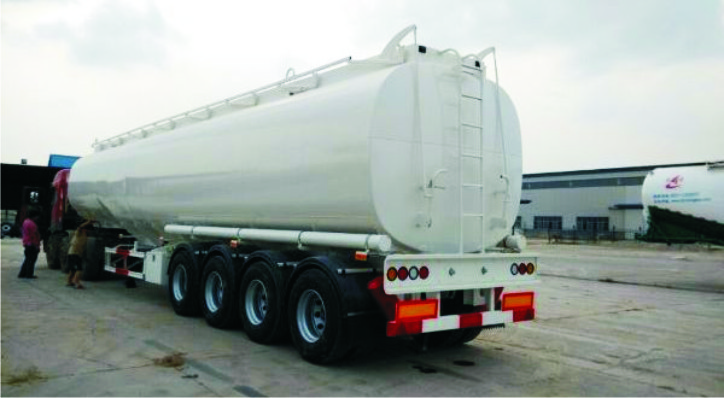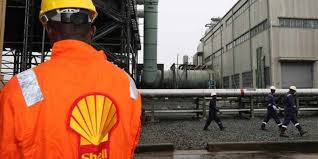Oil & Energy
Tanker Drivers Want FG To Fix Ikorodu-Sagamu Road

The Petrol Tankers Drivers (PTD) in Ogun has renewed its calls on the Federal Government to urgently rehabilitate the Ikorodu-Sagamu Road, now in a deplorable state.
The PTD Chairman at Mosimi Depot, Alhaji Ganiyu Adurogangan, made the call in Abeokuta, Ogun State, recently.
Adurogangan decried the poor condition of the road, describing it as devastating.
He said that the road had caused members of his association huge financial loss.
Adurogangan appealed to the Federal Government to “have mercy” on them, saying that the road posed deadly threat to many commuters and road users.
He added that failure to fix the road might lead to huge loss of lives and property as a result of an explosion of petroleum product.
Adurogangan, reacting to the gridlock caused by a tanker which got stuck in a muddy portion of the road recently, said that quick intervention of some security agencies saved the situation.
According to him, this is not the first or second time we have been begging the Federal Government to fix this road. We will keep begging and telling them until they heed to our cries.
“Just this Tuesday, one of our tankers, fully loaded with petrol, got stuck on the road. “Thank God for our security agencies who took charge of the situation and ensured transloading was done with caution. “What would have happened if they were not on ground or if it was a sunny hot day?
“We are losing huge amount of money everyday, because whether or not we pass the road, it is either a loss of money or loss of lives.
“When moving product from our Mosimi Depot, which should take us like 30 minutes, we have to go all the ways to pass through Lagos/Ibadan Expressway and you know what’s going on on that road now.
“This cost us more money and more time; since we cannot pass through that horrible road for fear of product spillage when some of our trucks fell due to the bad shape of the road.
“This particular one might have chosen to manage the road because he didn’t want to go and waste time on the Lagos/Ibadan Expressway and it got stuck. Imagine if it fell and spilled its content,” he said.
Adurogangan stressed the need for government to fix the road and make it motorable, which according to him, would reduce travel time.
“It is a federal road, so the Federal Government should be concerned about the road. It has been awarded lots of times, but we’re yet to see any major improvement.
“If the road is fixed, it would take a huge burden off the Lagos/Ibadan Road, and even, reduce the travel time,” he added.
Oil & Energy
Nigeria Loses More Crude Oil Than Some OPEC Members – Nwoko

Nigeria’s losses due to crude oil theft has been said to be more significant than those of some other members of the Organisation of Petroleum Exporting Countries(OPEC).
The Chairman, Senate Ad- hoc Committee on Crude Oil Theft, Senator Ned Nwoko, made this known in an interview with newsmen in Abuja.
Nwoko noted with dismay the detrimental impact of the issue, which, he said include economic damage, environmental destruction, and its impact on host communities.
According to him, the theft was not only weakening the Naira, but also depriving the nation of vital revenue needed for infrastructure, healthcare, education and social development.
The Senator representing Delta North Senatorial District described the scale of the theft as staggering, with reports indicating losses of over 200,000 barrels per day.
Nwoko disclosed that the ad hoc committee on Crude Oil Theft, which he chairs, recently had a two-day public hearing on the rampant theft of crude oil through illegal bunkering, pipeline vandalism, and the systemic gaps in the regulation and surveillance of the nation’s petroleum resources.
According to him, the public hearing was a pivotal step in addressing one of the most pressing challenges facing the nation.
‘’Nigeria loses billions of dollars annually to crude oil theft. This is severely undermining our economy, weakening the Naira and depriving the nation of vital revenue needed for infrastructure, healthcare, education, and social development.
‘’The scale of this theft is staggering, with reports indicating losses of over 200,000 barrels per day more than some OPEC member nations produce.
‘’This criminal enterprise fuels corruption, funds illegal activities and devastates our environment through spills and pollution.
‘’The public hearing was not just another talk shop; it was a decisive platform to uncover the root causes of crude oil theft, bunkering and pipeline vandalism.
‘’It was a platform to evaluate the effectiveness of existing surveillance, monitoring, and enforcement mechanisms; Identify regulatory and legislative gaps that enable these crimes to thrive.
‘’It was also to engage stakeholders, security agencies, host communities, oil companies, regulators, and experts to proffer actionable solutions; and strengthen legal frameworks to ensure stricter penalties and more efficient prosecution of offenders”, he said.
Nwoko noted that Nigeria’s survival depended
Oil & Energy
Tap Into Offshore Oil, Gas Opportunities, SNEPCO Urges Companies

Shell Nigeria Exploration and Production Company Ltd. (SNEPCo) has called on Nigerian companies to position themselves strategically to take full advantage of the growing opportunities in upcoming offshore and shallow water oil and gas projects.
The Managing Director, SNEPCO, Ronald Adams, made the call at the 5th Nigerian Oil and Gas Opportunity Fair (NOGOF) Conference, held in Yenagoa, Bayelsa State, last Thursday.
Adams highlighted the major projects, including Bonga Southwest Aparo, Bonga North, and the Bonga Main Life Extension, as key areas where Nigerian businesses can grow their capacity and increase their involvement.
“Shell Nigeria Exploration and Production Company Ltd. (SNEPCo) says Nigerian companies have a lot to benefit if they are prepared to take advantage of more opportunities in its offshore and shallow water oil and gas projects.
“Projects such as Bonga Southwest Aparo, Bonga North and Bonga Main Life Extension could grow Nigerian businesses and improve their expertise if they applied themselves seriously to executing higher value contracts”, Adams stated.
Adams noted that SNEPCo pioneered Nigeria’s deepwater oil exploration with the Bonga development and has since played a key role in growing local industry capacity.
He emphasized that Nigerian businesses could expand in key areas like logistics, drilling, and the construction of vital equipment such as subsea systems, mooring units, and gas processing facilities.
The SNEPCO boss explained that since production began at the Bonga field in 2005, SNEPCo has worked closely with Nigerian contractors to build systems and develop a skilled workforce capable of delivering projects safely, on time, and within budget both in Nigeria and across West Africa.
According to him, this long-term support has enabled local firms to take on key roles in managing the Bonga Floating, Production, Storage and Offloading (FPSO) vessel, which reached a major milestone by producing its one-billion barrel of oil on February 3, 2023.
Oil & Energy
Administrator Assures Community Of Improved Power Supply

The Emohua Local Government Area Administrator, Franklin Ajinwo, has pledged to improve electricity distribution in Oduoha Ogbakiri and its environs.
Ajinwo made the pledge recently while playing host in a courtesy visit to the Oduoha Ogbakiri Wezina Council of Chiefs, in his office in Rumuakunde.
He stated that arrangements are underway to enhance available power, reduce frequent outages, and promote steady electricity supply.
The move, he said, was aimed at boosting small and medium-scale businesses in the area.
“The essence of power is not just to have light at night. It’s for those who can use it to enhance their businesses”, he said.
The Administrator, who commended the peaceful nature of Ogbakiri people, urged the Chiefs to continue in promoting peace and stability, saying “meaningful development can only thrive in a peaceful environment”.
He also charged the Chiefs to protect existing infrastructure while promising to address the challenges faced by the community.
Earlier, the Oduoha Ogbakiri Wezina Council of Chiefs, led by HRH Eze Goodluck Mekwa Eleni Ekenta XV, expressed gratitude to the Administrator over his appointment and pledged their support to his administration.
The chiefs highlighted challenges facing the community to include incessant power outage, need for new transformers, and the completion of Community Secondary School, Oduoha.
The visit underscored the community’s expectations from the LGA administration.
With Ajinwo’s assurance of enhancing electricity distribution and promoting development, the people of Oduoha Ogbakiri said they look forward to a brighter future.
By: King Onunwor
-
Business4 days ago
Replace Nipa Palms With Mangroove In Ogoni, Group Urges FG, HYPREP
-
News4 days ago
Demonstrate Commitment In Improving Host Communities, Ibas Tells Corps Members
-

 Politics4 days ago
Politics4 days agoTinubu’s Contribution To Buhari’s Presidency Marginal – Ex-SGF
-
Opinion4 days ago
How Reliable Is AI
-

 News3 days ago
News3 days agoRSG Tasks Rural Dwellers On RAAMP …As Sensitization Team Visits Akulga, Degema, Three Others
-
Politics4 days ago
Keyamo Inaugurates Ganduje As FAAN Board Chair
-
Rivers4 days ago
HOS Tasks Rural Dwellers On RAAMP … As Project Sensitization Team Visit Degema, AKULGA
-

 Politics4 days ago
Politics4 days agoReps Constitution Review Committee Holds Zonal Hearing For Rivers, C’River, Akwa Ibom In Calabar

